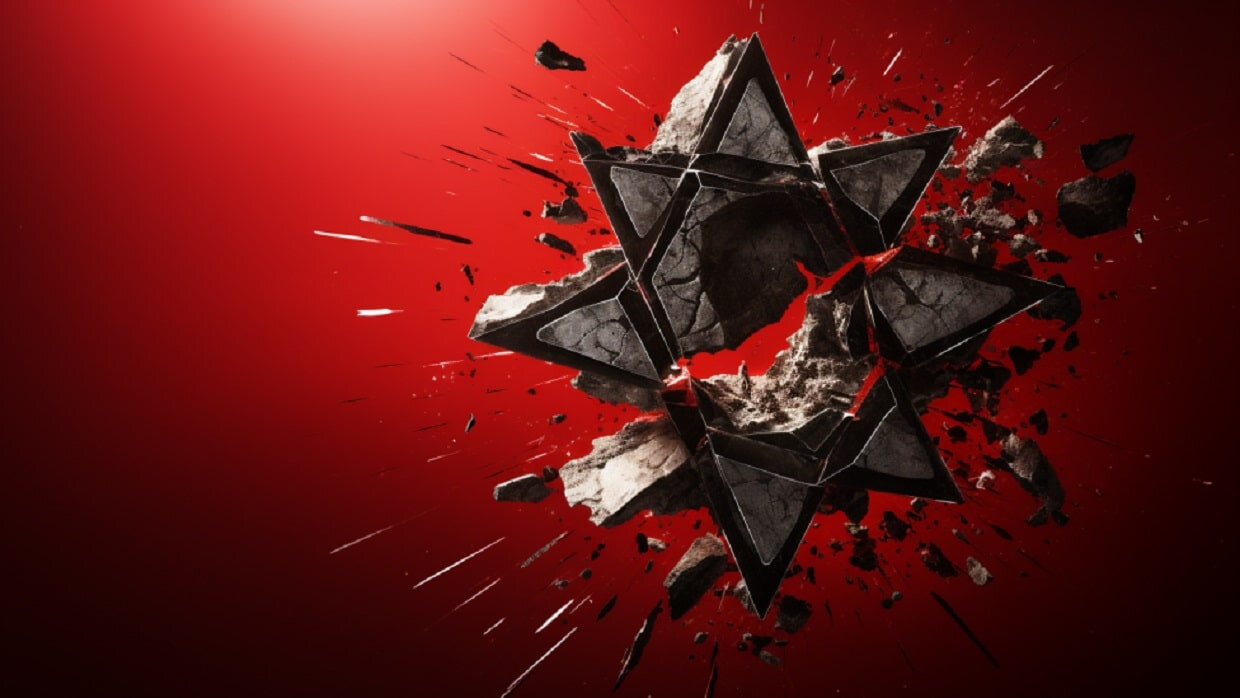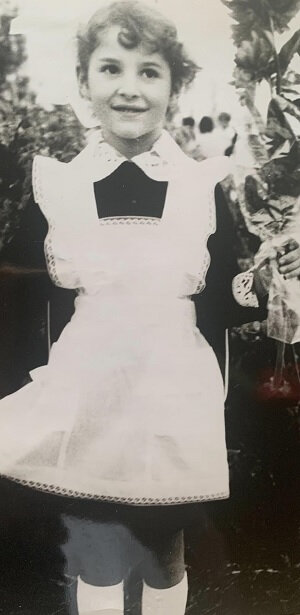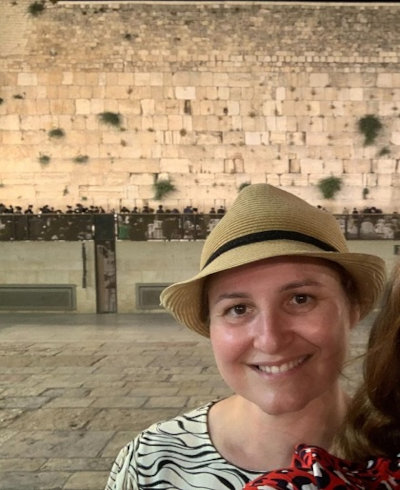 Vampire Weekend's Surprising Jewish Stories
Vampire Weekend's Surprising Jewish Stories


7 min read
Institutionalized antisemitism was infused in the very fabric of Soviet society, producing a feeling of inferiority shared by many Jews.
I was born to a Jewish family in a small town in the southwest region of the former Soviet Union. Though my childhood was mostly carefree, I never truly felt at home. There was an unspoken barrier between me and my peers, erected by the blemish of my Jewishness.
It was common to hear kids say things like, “I like you even though you’re Jewish.” Institutionalized antisemitism was infused in the very fabric of Soviet society and produced an almost inborn feeling of inferiority shared by many Jews.
When my best friend called me a “dirty Jew” in a moment of anger, no apology was offered and the “friendship” continued.
When my best friend called me a “dirty Jew” in a moment of anger, no apology was offered and the “friendship” continued. Our inferior status as Jews and its accompanying victimhood created a sense of camaraderie amongst my Jewish friends. It’s no wonder that I heard constant conversations of someone leaving the Soviet Union for the United States or Israel. This was a not-so-secret dream of every Soviet Jew, talked about in whispers.
As a child, I loved looking at our family pictures, among them a black and white photo of my great grandfather, his face lit by a serene smile. I was puzzled by his tranquil expression, which stood in stark contrast to the Soviet society I inhabited. My grandmother, his daughter, exemplified the inner world expressed on this man’s face. It was the intrinsic sense of worth versus one based on external validation, a dignified humility versus smug self-assurance.

First grade in the Soviet Union
Once, when I was 9 years old, I called out to my grandmother late at night, complaining that I couldn’t sleep. We shared the same room. “I’ll teach you something to say before bed,” she said, repeating a phase in an unfamiliar language. Somehow, I sense it was a Jewish prayer. I memorized the phrase and continued saying it every night, like a mantra. It was the Shema, Judaism’s essential declaration of belief in One God.
When I was ten, the old synagogue which housed a boxing school under the Soviet regime reopened. There was a group Bar/Bat Mitzvah ceremony for all the boys who turned thirteen and the girls who turned twelve that year. Each participant received a blue plastic briefcase containing either a tallis for the boys or two silvery candle holders for the girls, as well as a children’s prayer book. Delighted, I showed these to my grandmother who explained that the candle holders were for lighting Shabbat candles. I began lighting Shabbat candles, and with no prior knowledge, this somehow left me feeling exalted. A dormant part of me was responding with unexplained excitement and consummate awe.
As the Soviet bloc collapsed, erupting in the complete destruction of the social infrastructure—with stores empty of merchandise, police and outlaws fusing into one, there was a glimmer of hope: we could finally leave the country where Jews were abused and sidelined for generations. As the flood gates of immigration opened wide, a trickle became a torrent of Jews clamoring to leave. Their destination: the United States and Israel.
I recall sitting in a small room at the United States Consulate in Moscow, facing a bespectacled, aloof immigration official behind a glass barrier. My father described our life in the crumbling Soviet Union. A life where our family’s Jewishness was a liability which permeated our existence. This liability was etched on our passports and birth certificates which reduced our chances of being admitted to universities and getting promotions at work. Nevertheless, our Jewishness, a vague yet undeniable identity, became our ticket to freedom.
 Lighting Shabbat candles
Lighting Shabbat candles
In the summer of 1993, we landed in New York. There was a promise of freedom from the oppressive, antisemitic society, freedom to pursue all the opportunities this country had to offer. And perhaps for the first time, freedom to explore the meaning of what it meant to be a Jew. With the influx of immigrants from the former Soviet Union, Jewish schools in West Rogers Park area of Chicago, where we lived at the time, graciously opened nearly fully subsidized spots to accommodate the refugees. One such school was Hanna Sacks Bais Yaakov.
During my family’s first meeting with Rabbi Belsky, the principle of HSBY, my mother smiled nervously as my father slouched in the chair with a sheepish expression on his face. Rabbi Belsky, leaned back in his chair with a broad, easy-going smile, his kippah pushed forward on his forehead. I don’t recall the details of the conversation, but I remember how this man made us feel. We felt like the sun was shining down on us. The message he conveyed was, “It’s great that you are here! You are enough. I have no doubt that you will be ok!”
I admire the religious women who taught us, secular teen girls from a foreign country. Many of us, victimized by the Soviet antisemitism, harbored considerable self-loathing regarding our Jewish identity. These teachers attempted to reach us, introducing us to Jewish holidays, Hebrew literacy and more. Unfortunately, the relationship with our teachers quickly deteriorated into ‘us’ vs. ‘them.’ Despite their best intentions, teenage girls faced off with the faculty who conveyed the message that we were unfortunates who needed to be rescued, taught, and uplifted.
With the full force of our teenage chutzpah, many of us rejected their benevolence because accepting it would once again place us as the flawed ones, the familiar status we internalized from living in the former Soviet Union. I felt like damaged goods, but now, ironically, surrounded by fellow Jews whose superiority was rooted in the very thing they were trying to impart upon me, an authentic Jewish way of life.
Rabbi Dimarsky wasn’t thrown off balance by our antics and he didn’t come off as someone who wanted to fix us.
Rabbi Eliezer Dimarsky stepped in to bridge this divide. An immigrant from the former Soviet Union himself, he taught one of the Jewish studies classes at Hanna Sacks. The confrontational air which dominated our Jewish studies subsided in his class. Rabbi Dimarsky was someone we could relate to; he spoke our language was familiar with our culture and our humor. Most importantly, he wasn’t thrown off balance by our antics and he didn’t come off as someone who wanted to fix us. Although he appeared to be one of us, he was a fully committed, Orthodox Jew, showing us that being a Jew from the former Soviet Union could successfully coexist with Torah observance.
Within a few years, my friends and I found our way to the welcoming home of the Dimarsky family where we experienced beautiful Shabbat meals and started taking informal classes to learn more about our Jewish identity, something Soviet Jews have equated with their collective victimhood. This launched my slow but steady journey to reclaiming my relationship with God, the heritage I never knew was mine, and the authentic, rich inner world of my great grandparents.
 Visiting the Western Wall
Visiting the Western Wall
Looking back, I cannot help but draw a parallel between the experience of Soviet Jewry and the Exodus from Egypt. After the negative report of the spies, the former Jewish slaves spent 40 years in the desert before entering the land of Israel. One biblical commentator suggests that these 40 years were not a punishment, but the time needed to cure their victim mentality and develop an authentic relationship with God, the foundation for genuine trust. Even as they stumbled, rebelled, and complained, God cared for them and loved them.
Though the physical exodus was relatively swift, it took longer to replace the false self-image of the victimized slaves with the Jews’ true identity of a holy nation with an eternal purpose. This approach was successfully emulated by Rabbi Dimarsky, who is leading a thriving, growing community of Jews from the former Soviet Union.

Polina,
Have you ever wondered why God has permitted continued antisemitism over the millennium against His covenant people? As an Orthodox Jewish man, I believe the answer is found many times in the Torah. One example: click Deuteronomy 31:16-18.
When my best friend in the Soviet Union called me a dirty Jew in 1986 I have never spoken to him again and the friendship was over. I went ahead and found my best Jewish friend who is still my best friend after 37 years.
Even in the Soviet Union there was a concept of dignity. Yes. It was awfully difficult, but not impossible. Maybe people will think of me as a boaster, don't know, but I am angry at those who whyne about there Soviet Jewish experience. Be proud of it! Learn and find some advantages in your experiences. Be a proud Soviet Jew.
Polina, I appreciated your story, having myself immigrated from Moscow at a young age, [I still have the white apron and brown dress uniform from first grade like in your photo. :)]. I think the challenge and opportunity for us now that we have become "Westernized" is to welcome more recent ex-Soviet Jewish immigrants (Russian, Ukrainian, etc.) and making them feel supported and understood as well, like the good work and example set by Rabbi Dimarsky. Thanks for sharing your story.
Hi all,
As a former Soviet Jew, I appreciate this story, the illustrations and the beatuful writing style of the author. However, where is the name of the author? Who wrote this article? I hope you can fix the bug soon.
We added the name of the author to the article. The author is Polina Kucher.
Thanks for pointing it out.